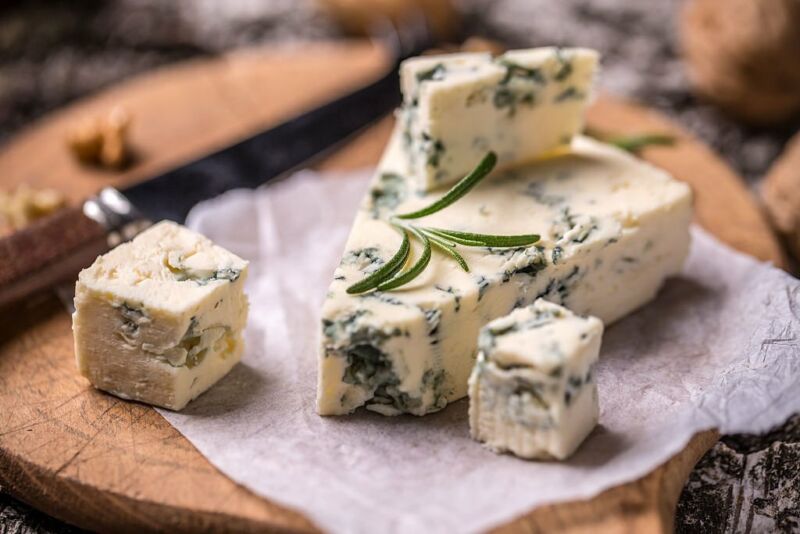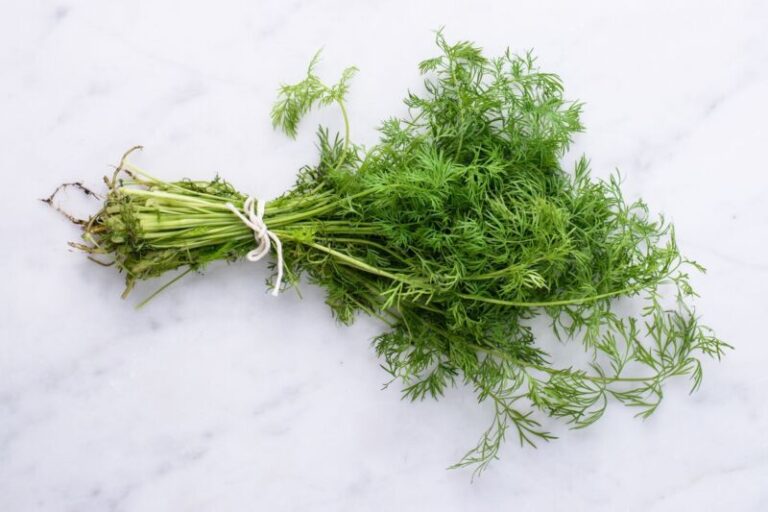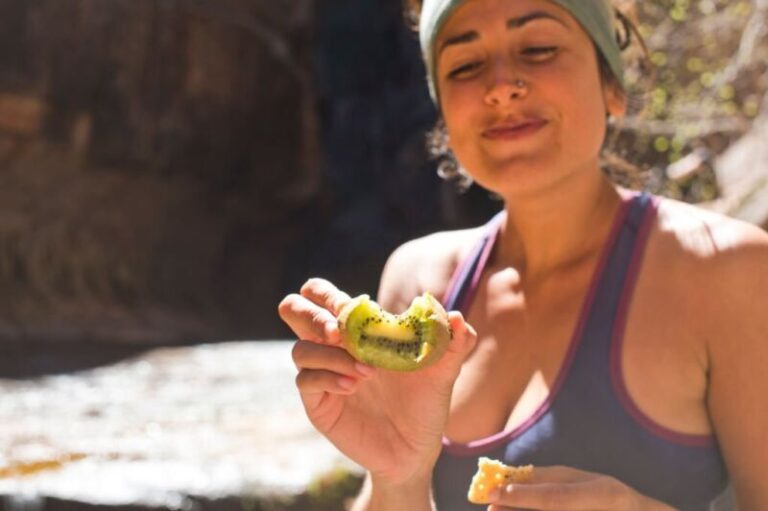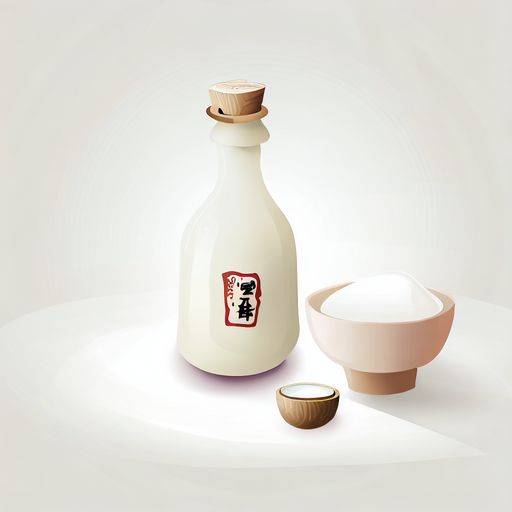Is Gorgonzola a Type of Blue Cheese?
Blue cheeses like gorgonzola are complex, flavorful cheeses revered by cheese connoisseurs. But what exactly makes a blue cheese blue? And is gorgonzola considered a blue cheese?
In this article, we’ll cover everything you need to know about blue cheese and gorgonzola, from how they’re made to the different varieties available. We’ll also look at the similarities and differences between traditional blue cheeses like Roquefort and gorgonzola.
An Introduction to Blue Cheese
Blue cheese gets its unique flavor, aroma, and appearance from harmless, beneficial mold. During production, mold spores are added to give the cheese its distinctive “blue” veins and pungent flavor.
The mold used to create blue cheese is safe to eat. It’s from the Penicillium family, which provides the antibiotic we know as penicillin. The mold doesn’t produce any harmful mycotoxins. Instead, it breaks down fats and proteins, resulting in the tangy, earthy flavor blue cheese is known for.
There are different strains of edible Penicillium mold used to make various blue cheeses. The main ones are:
- Penicillium roqueforti – This strain is used to produce Roquefort cheese and is also used for gorgonzola cheese. It results in a tangy, piquant flavor.
- Penicillium glaucum – The main strain used for Stilton and many other blue cheeses. It produces a milder, more crumbly blue cheese.
During the cheesemaking process, these mold spores are added so the mold can grow, creating the characteristic veining and flavors. Additional steps like pricking the cheese to allow air circulation also encourage mold growth.
The end result is a cheese taken to another level by beneficial mold – what makes blue cheese blue. Next, we’ll look closer at one famous blue cheese: gorgonzola.
What is Gorgonzola Cheese?
Gorgonzola is an Italian cow’s milk blue cheese, originally from the town of the same name in Lombardy. Along with Roquefort from France, gorgonzola is one of the world’s best-known and loved blue cheeses.
Like other blue cheeses, the distinctive blue veining and zesty taste of gorgonzola comes from the introduction of Penicillium mold spores. Specifically, Penicillium roqueforti mold is used during the making of gorgonzola.
There are two main varieties of gorgonzola cheese:
- Gorgonzola Dolce (“sweet gorgonzola”): Milder, creamier, and more subtle in flavor with a pale yellow paste. The blue veining is less prominent.
- Gorgonzola Piccante (“sharp gorgonzola”): More crumbly in texture with bold blue veining. It has a stronger, more pungent taste.
Gorgonzola is made from unskimmed cow’s milk. It goes through a complex production process taking several months from curdling the milk to achieving peak ripeness. The cheese is aged in caves, helping the blue veining develop.
Young gorgonzola can be creamy and mild tasting, while longer aged versions take on sharper, spicier notes. The blue veining ranges from pale green to deep azure. The mold contributes earthy, funky flavors that “blue cheese” lovers crave.
How Traditional Blue Cheeses Are Made
To understand how gorgonzola fits into the blue cheese family, let’s take a quick look at how traditional blue cheeses like Roquefort and Stilton are made:
Roquefort Cheese
- Starts by curdling raw sheep’s milk.
- Penicillium roqueforti spores are added to the curds.
- The curds are shaped into wheels and pierced with stainless steel rods to introduce oxygen. This allows the Penicillium mold to grow and create blue veins throughout the cheese.
- Wheels are wrapped in foil and aged in the natural Combalou caves for a minimum of three months, often much longer for sharper flavors.
- The cool, damp environment of the caves provides the ideal conditions for Penicillium roqueforti to flourish, resulting in the characteristic tangy, earthy flavor of Roquefort.
Stilton Cheese
- Made from cow’s milk.
- Penicillium glaucum spores are added during cheese production.
- After initial aging, the wheel of cheese is pierced with stainless steel needles to introduce extra oxygen. This allows the mold to grow and create extensive blue veining.
- Wheels are then aged for a minimum of nine weeks.
- The Penicillium glaucum used results in milder flavors than Roquefort. The texture is also more crumbly.
- Only blue cheese aged in Derbyshire, Nottinghamshire, or Leicestershire can legally be called “Stilton.”
The process for traditional blue cheeses like Roquefort and Stilton involves:
- Adding Penicillium mold spores during cheesemaking
- Piercing/pricking the cheese to promote mold growth
- Aging the cheese in cool, humid conditions so the mold can flourish
- Producing the characteristic blue veins and tangy, piquant flavors
Next, we’ll see how gorgonzola compares and why it’s considered a blue cheese.
The Process for Making Gorgonzola Cheese
While the details vary slightly, gorgonzola is produced in a similar way to traditional blue cheeses like Roquefort and Stilton:
- Made from unskimmed cow’s milk.
- Penicillium roqueforti mold spores are added during the cheesemaking process. This is the same strain used for Roquefort.
- The curds are cut into smaller pieces to help the mold spread.
- Wheels are pierced with copper needles to allow air circulation. This provides the right conditions for mold growth.
- Wheels are then wrapped in foil or waxed rind and aged in damp natural caves for at least three months.
- The cooler caves provide the temperature and humidity needed for the Penicillium roqueforti to create the characteristic blue veining.
- Longer aging results in sharper flavor. The mold contributes earthy, tangy flavors.
While the process differs slightly from other blue cheeses, gorgonzola uses the same principles:
- Inoculating the curds with Penicillium mold spores
- Piercing the cheese to encourage mold growth
- Aging in cool, humid conditions so the blue veins develop
The result is a classic, richly-flavored blue cheese with a trademark blue marbling.
Why Gorgonzola is Considered a Blue Cheese
Given the production methods above, gorgonzola clearly belongs to the blue cheese family. Here’s a recap of the key similarities confirming gorgonzola is a blue cheese:
- Gorgonzola is inoculated with Penicillium roqueforti, one of the main strains of mold used for blue cheeses.
- The cheese is pierced to introduce oxygen and enable the mold to grow. This creates the characteristic blue marbling.
- Like other blue cheeses, gorgonzola wheels are aged in cool, humid caves. This allows the mold to fully develop, producing the unique flavors.
- The length of aging impacts the intensity of flavors. Young gorgonzola is milder while longer aged versions have sharper, more pungent flavor.
- The blue-green veins and white cheese paste gives gorgonzola the marbled appearance of blue cheeses.
- The flavor profile includes the tangy, earthy notes typical of blue cheeses. The Penicillium roqueforti mold contributes to the distinct taste.
- There are two main varieties of gorgonzola – Dolce and Piccante. This parallels the different varieties of traditional blue cheeses.
- Like Roquefort and other famous blue cheeses, gorgonzola has Protected Designation of Origin (PDO) status ensuring it comes from a specific region.
In short, gorgonzola is produced using the same techniques, molds, and aging conditions as traditional blue cheeses. It results in the characteristic blue veins, creamy to crumbly texture, and tangy flavor profile people expect from blue cheese. No wonder gorgonzola is considered one of the world’s great blue cheeses!
Other Popular Blue Cheeses
Gorgonzola belongs to the illustrious family of blue cheeses. Here are a few other famous varieties people adore:
Stilton
- Hailing from England, Stilton has a drier, crumblier texture than gorgonzola.
- Its milder taste comes from using Penicillium glaucum mold.
- Varieties include Blue Stilton, White Stilton (without veins), and Vintage Stilton.
Roquefort
- Made in the Combalou caves of France from raw sheep’s milk.
- Aged a minimum of five months for trademark strong, tangy flavors from Penicillium roqueforti mold.
- Has a moist, crumbly texture with distinctive green veins.
Danablu
- A Danish blue cheese made from cow’s milk.
- Smooth, creamy texture with small blue veining.
- Mild, tangy, slightly salty flavor.
Fourme d’Ambert
- From the Auvergne region of France.
- Made from cow’s milk.
- Smooth, creamy texture when young.
- Mild flavors with a subtle spicy note.
Along with these other famous varieties, gorgonzola stands out as one of the world’s classic blue cheeses.
How to Enjoy Gorgonzola and Blue Cheese
Thanks to their diverse flavors and textures, gorgonzola and other blue cheeses are extremely versatile ingredients. Here are some delicious ways to enjoy them:
- Crumbled over salads: The creamy, crumbly texture and tangy flavor pair perfectly with crisp lettuces and fresh veggies.
- Baked into dips: Melted into a warm, flavorful dip is a great way to highlight gorgonzola’s bold flavors.
- Added to risottos and pasta: The rich, earthy notes of gorgonzola give an incredible flavor boost to creamy rice and pasta dishes.
- On pizza: Along with mozzarella, gorgonzola makes the ideal topping for a gourmet white pizza.
- In cheese boards: The unique taste of gorgonzola shines when part of an artisanal cheese platter.
- Stuffed in burgers: Mix crumbled blue cheese into burger patties or add a tangy slice on top.
- Paired with fruit: Fresh figs, apples, and pears beautifully complement blue cheese varieties.
The complex flavors and smooth, crumbly textures of gorgonzola and other blue cheeses lend themselves to both savory and sweet pairings. Whether baked into an entree or served with fruit and wine, blue cheese takes any recipe or cheese board to the next level.
Gorgonzola and Blue Cheese: A Tasty Conclusion
As you can see, when it comes to production methods, mold strains, aging conditions, and flavor profiles, gorgonzola checks all the boxes of a classic blue cheese. Like Roquefort, Stilton, and other famous blue cheese varieties, the blue veining and zesty bite of gorgonzola comes from Penicillium mold.
Both in Italy where it originated and worldwide, gorgonzola is rightfully considered one of the premier blue cheeses. Along with other famous blue cheese varieties, it holds Protected Designation of Origin status for its place of origin and traditional production methods.
With its smooth, creamy dolce variety and more crumbly, robust piccante version, gorgonzola offers the range of textures and flavors blue cheese fans enjoy. Its complex taste has earned it a place on cheese boards and in recipes across the globe.
So yes, gorgonzola is undeniably a blue cheese! Its characteristic blue veins, Penicillium mold, and tangy zest hearken back to the traditional cave-aged blue cheeses of Europe. Lovers of strong, mold-ripened cheeses can rejoice in gorgonzola’s rich heritage as part of the blue cheese family.






